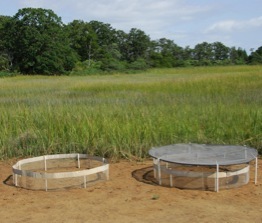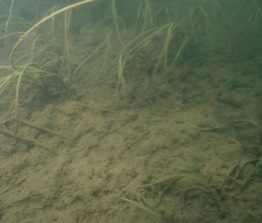CURRENT research projects

Linking changes in biodiversity to important ecosystem processes requires that we anticipate how key processes structuring natural systems will change under new environmental conditions. The rocky intertidal zone is an ideal habitat for investigating such problems, as species-specific responses to variation in thermal stress and wave exposure produce dramatic shifts in the distribution and abundance of taxa both within and among sites. By documenting how species identity, abundances, and interactions vary across a range of environmental conditions today, we gain insight into the potential response of community structure to changing conditions in the future.

Effects of Climate Change on Rocky Shore Communities
Loss of coastal wetlands and their associated ecosystem services during the past century has been extensive; in California, less than 10% of historical distributions remain intact. In collaboration with Christine Whitcraft and Christopher Lowe, we are evaluating the success of a recent large-scale restoration of the Huntington Beach Wetlands in Huntington Beach, CA. Our data will allow us not only to quantify the recovery of wetland structural features (e.g., plant cover, invertebrate diversity, and sediment characteristics), but to then link these attributes to both trophic function within habitats and flux among habitats.
The California halibut, Paralichthys californicus, is facultatively dependent on coastal wetlands for nursery habitat. As a consequence, they are a model organism for investigating the functional recovery of restored habitat. We are assessing this by monitoring the fine-scale distribution, movement patterns, long-term site fidelity, and diet of individuals within the wetland system with regular fish abundance surveys, active and passive tracking using acoustic telemetry techniques, and stable isotope analyses.
FUNCTIONAL RECOVERY OF RESTORED COASTAL WETLANDS
Biochemical indicators of physiological condition (e.g., metabolic enzyme activity, RNA:DNA ratios, and heat shock protein expression levels) have been used successfully by marine ecologists for several decades. Nevertheless, most such studies have assayed for only a single or relatively limited set of markers. New technologies such as proteomic mass spectrometry present an exciting opportunity to develop powerful diagnostic tools with which to evaluate the effects of changing environmental conditions on organisms. We are using 2-D gel electrophoresis analyses to identify characteristic sets of protein biomarkers whose expression is correlated with temperature stress or food limitation in rocky shore and salt marsh organisms. Proteomic analyses are done at the Center for Education in Proteomics Analysis (CEPA), the CSU system-wide analytical core facility for proteomics, located at CSULB within the Institute for Integrated Research in Materials Environments and Society (IIRMES).

Biochemical Indicators of Stress and Metabolism
Rocky intertidal community, Abalone Cove Shoreline Park, Rancho Palos Verdes, CA
California mussels, Mytilis californianus, Abalone Cove Shoreline Park, Rancho Palos Verdes, CA
Restoration of Brookhurst Marsh, Huntington Beach Wetlands, Huntington Beach, CA
PREVIOus research projects
Since its discovery on the east coast of North America less than two decades ago, the non-native Asian shore crab, Hemigrapsus sanguineus, has increased rapidly in abundance and interacts strongly with many native species. In mid-Atlantic salt marshes, Hemigrapsus and another invasive predator, the green crab, Carcinus maenas, potentially affect the survival, growth and behavior of the ribbed mussel, Geukensia demissa, a key salt marsh species. Both species of crab readily eat smaller mussels, but while Geukensia thicken their shells in the presence of green crabs they do not appear to recognize Hemigrapsus as a threat. Presumably this is due to differences in the invasion histories of the two crabs – Carcinus has been in the region for over 100 years. The mussels’ failure to respond to waterborne cues from Hemigrapsus may therefore lead to increased predation risk. As ribbed mussels facilitate plant growth by limiting sediment erosion and increasing nutrient availability through fertilization, negative effects of crabs on mussel populations may also alter local productivity and nutrient dynamics.

ecological impacts of a novel invasive predator in a mid-atlantic salt marsh
Non-native Asian shore crab, Hemigrapsus sanguineus, in a Spartina alterniflora saltmash, Flax Pond Salt Marsh, Old Field, NY
In mid-Atlantic salt marshes, reproductively active male sand fiddler crabs, Uca pugilator, use a single greatly enlarged claw as both a weapon to defend specialized breeding burrows from other males and an ornament to attract females for mating. Carrying the large claw, which can comprise as much as 40% of the total body mass, imposes significant energetic and locomotor costs to male crabs. These costs are exacerbated by the location of breeding burrows in open areas high on the shore that are characterized by low food availability and high temperatures. Nevertheless, when the chance of successfully acquiring a mate is high, males will abandon foraging activities and accept a higher body temperature than when the chances of mating are low. As a consequence, males in good physiological condition are best able to successfully establish and defend breeding territories for the longest amount of time, and are therefore most likely to attract mates.

Costs of sexual selection in A fiddler crab
Shaded and control plots to investigate the effects of temperature and food availability on fiddler crab behavior, Flax Pond Salt Marsh, Old Field, NY
In southern California, native eelgrass, Zostera marina L., and the non-native mussel Musculista senhousia have dynamic complex interactions. Although high densities of Musculista inhibit the growth of eelgrass, mussel growth and survival decline with increasing eelgrass shoot density and patch size. The correlation of these eelgrass attributes with local concentrations of chlorophyll a and water flow speeds suggests that the mussels, which feed on phytoplankton delivered by water currents, might suffer food limitation inside large beds. Experimentally supplementing phytoplankton to Musculista living in eelgrass resulted in a 50% increase in mussel growth rates, supporting this hypothesis. Our results highlight how effects of anthropogenic perturbations that currently threaten eelgrass populations directly could be magnified by interactions with a non-native species. Eelgrass habitat fragmentation and increasingly frequent phytoplankton blooms resulting from coastal development and eutrophication have well-described negative effects on eelgrass. By increasing phytoplankton availability to Musculista, such perturbations may also indirectly affect eelgrass by acting to enhance mussel survival and growth.

complex interactions between a non-native bivalve and native seagrass
Disjunct border between a native seagrass, Zostera marina, and a non-native mussel, Musculista senhousia, San Diego Bay, San Diego, CA
